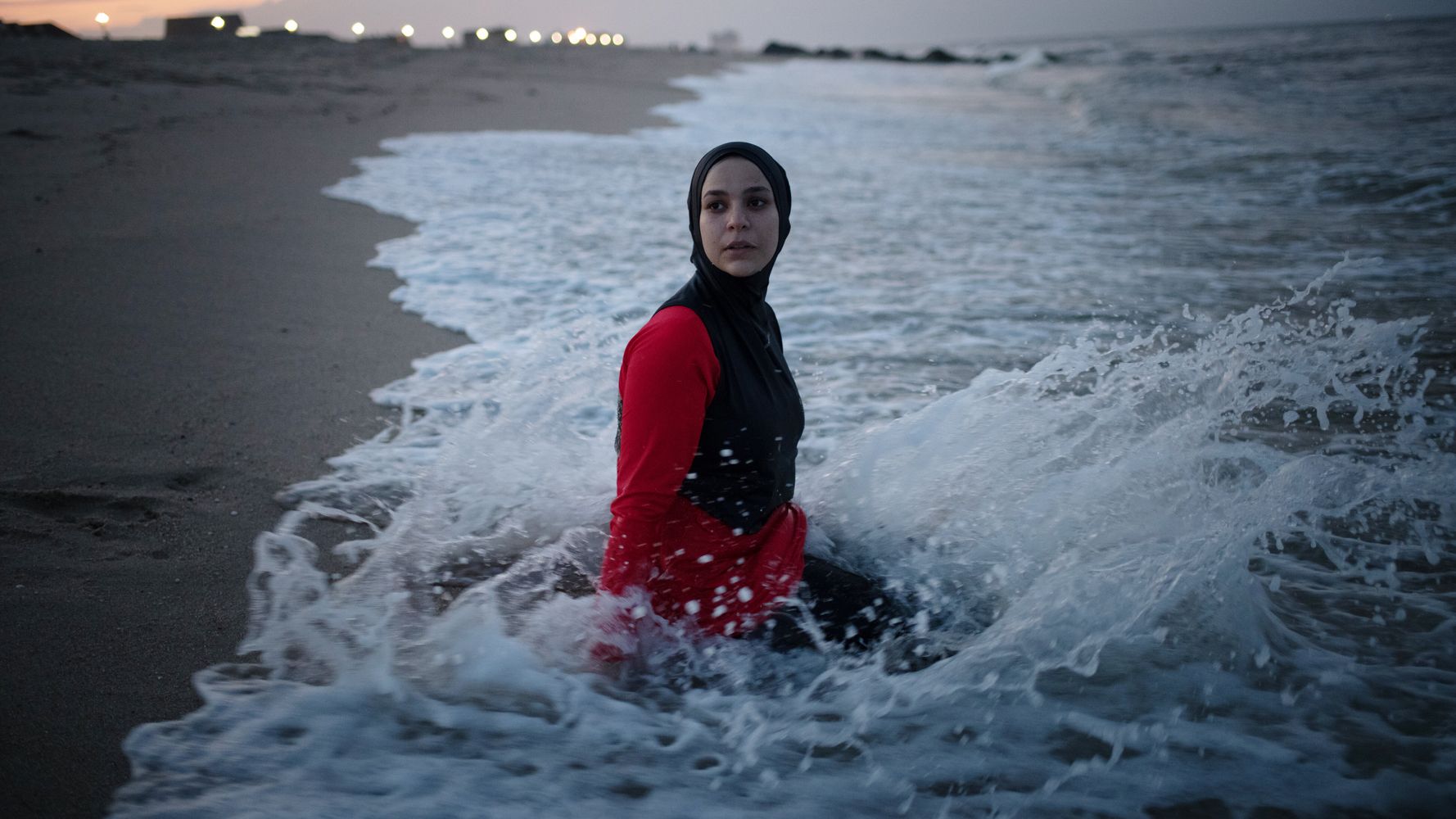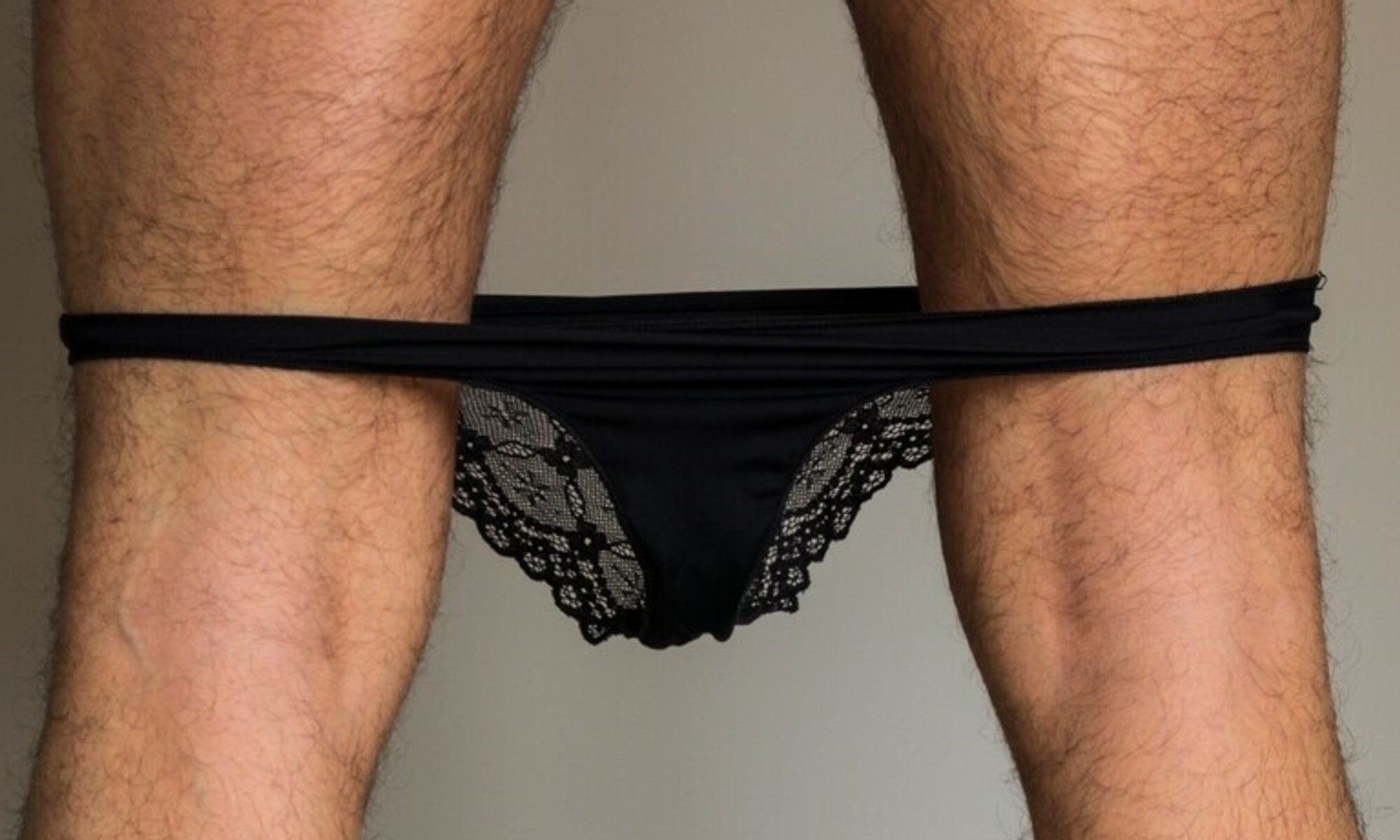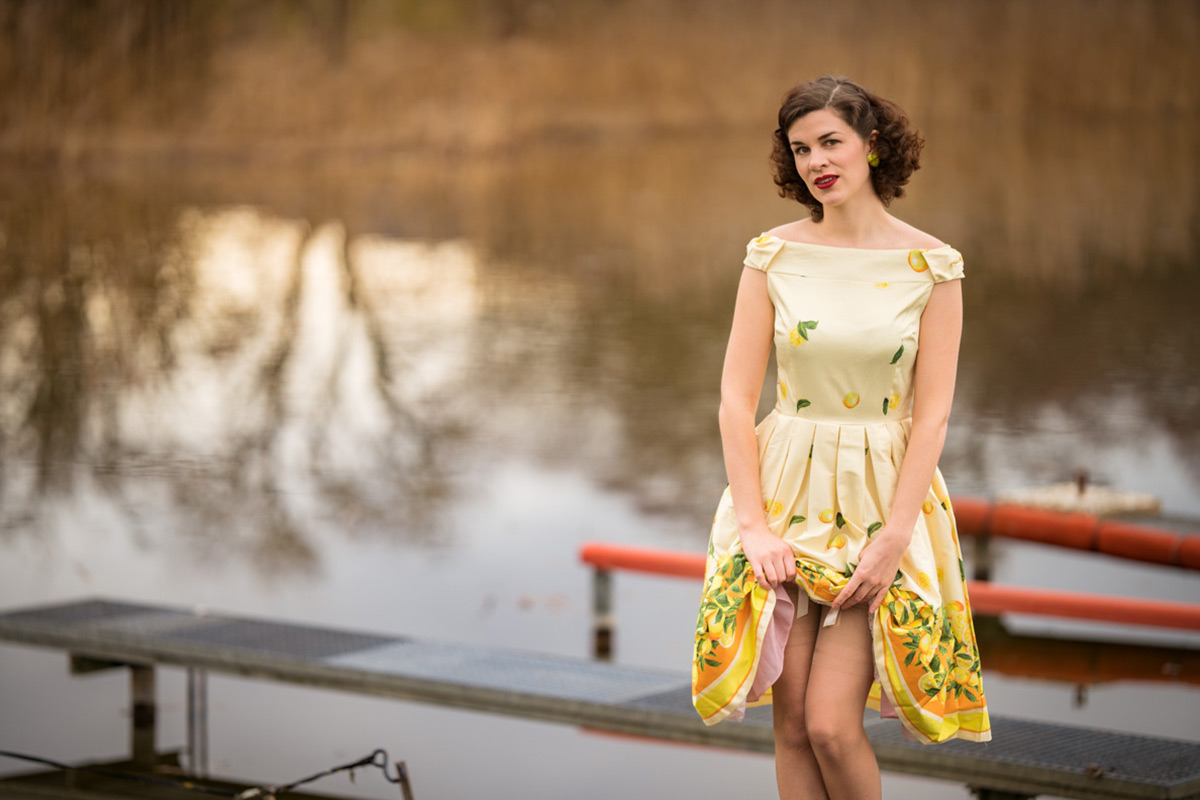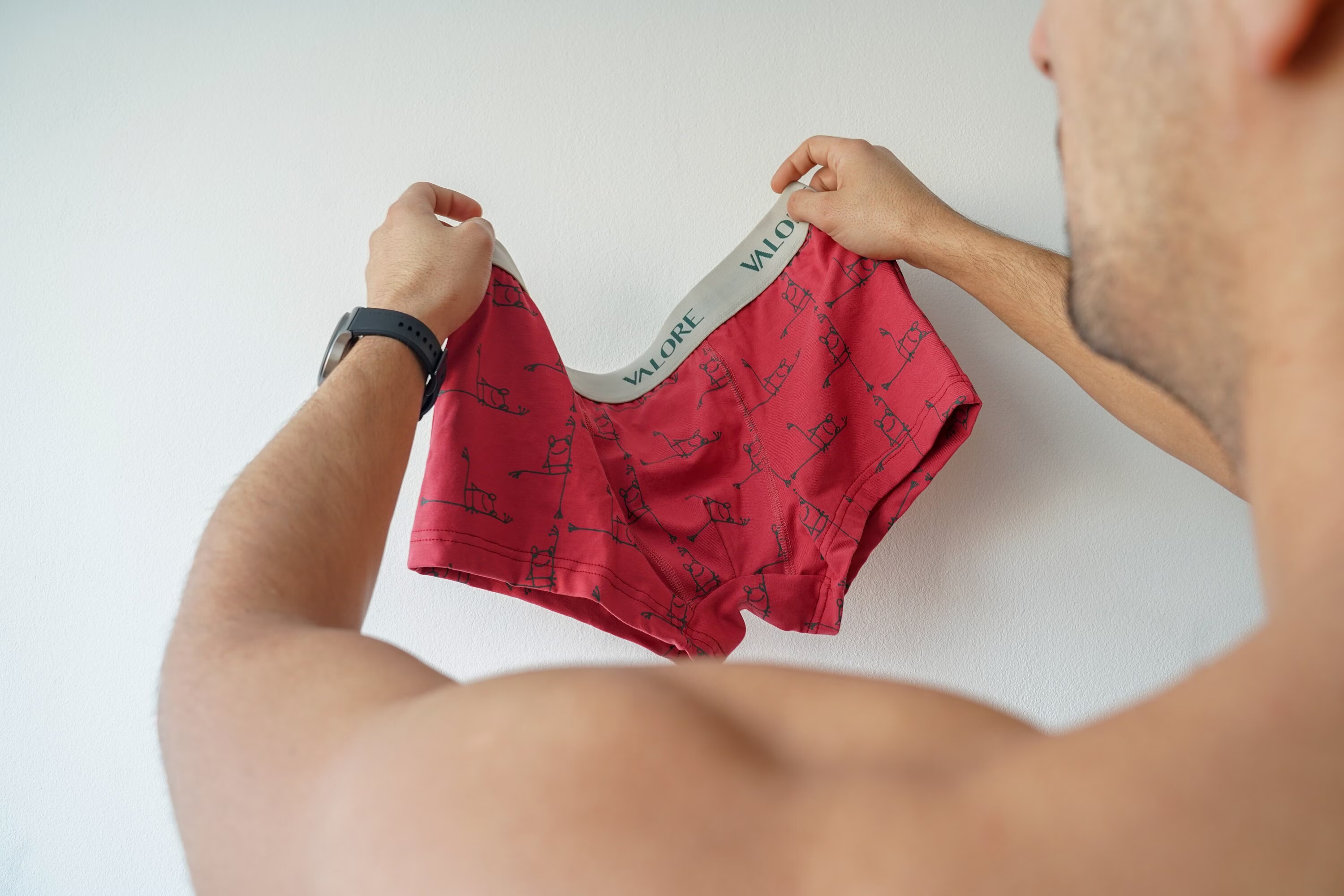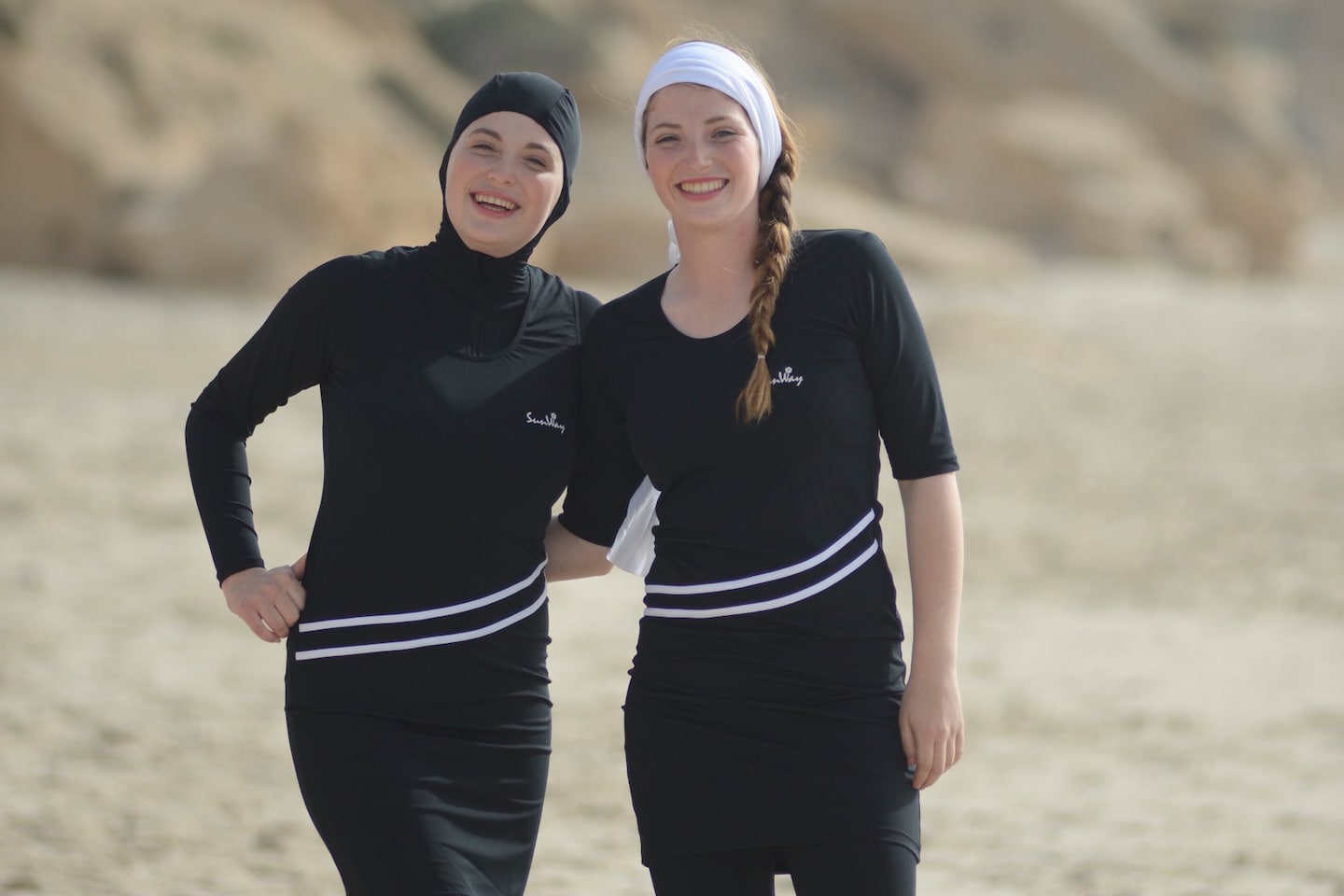Home>Women's Underwear>Swimwear>Non-Muslim Women Who Wear Burkinis
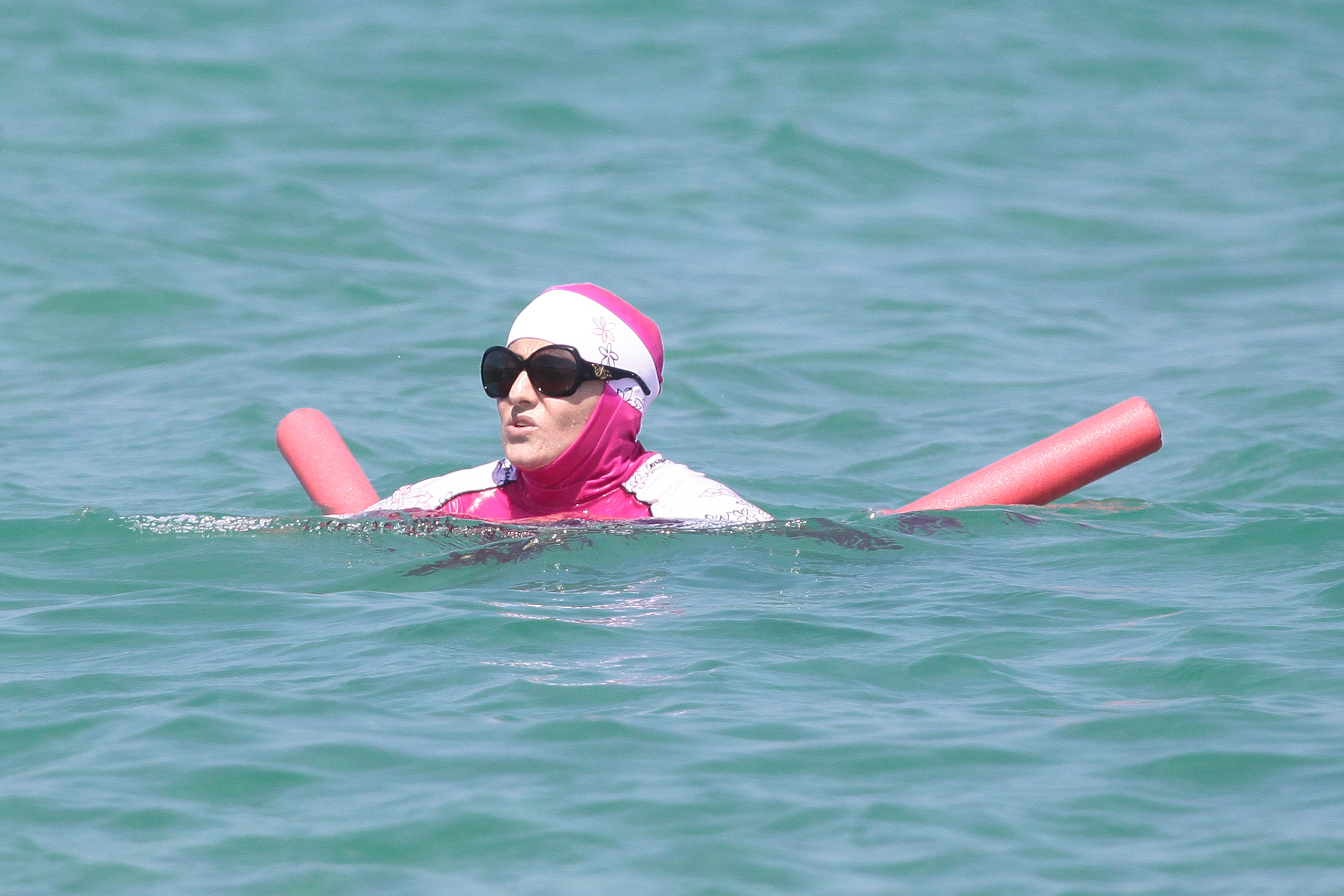

Swimwear
Non-Muslim Women Who Wear Burkinis
Modified: August 2, 2023
Discover stylish swimwear options for non-Muslim women who choose to wear a burkini, offering both modesty and comfort. Browse our collection now!
(Many of the links in this article redirect to a specific reviewed product. Your purchase of these products through affiliate links helps to generate commission for Under-tec.com, at no extra cost. Learn more)
Table of Contents
- Introduction
- Definition of Burkini
- Reasons for Non-Muslim Women Wearing Burkini
- Cultural Appreciation vs Cultural Appropriation
- Benefits of Wearing Burkini
- Challenges Faced by Women Non-Muslim Wearing Burkini
- Criticisms and Controversies Surrounding Burkini Wearing
- Comparison with Traditional Swimwear
- Conclusion
Introduction
The increasing popularity of the burkini among non-Muslim women has sparked both curiosity and controversy. The burkini is a modest swimwear option that covers the body from head to toe, allowing women to enjoy water activities while maintaining their modesty. Originally designed for Muslim women to comply with religious dress codes, the burkini has now become a fashion statement embraced by women of diverse backgrounds.
The burkini is a fusion of the words “burqa” and “bikini,” symbolizing the blend of modesty and freedom. It is made of lightweight and water-resistant fabric that allows movement while providing full coverage. The design typically includes a head covering, long sleeves, and ankle-length pants. Despite its modesty, the burkini still allows women to enjoy swimming, surfing, and other water sports without compromising their cultural or religious beliefs.
Non-Muslim women have various reasons for choosing to wear the burkini. Some perceive it as a form of cultural appreciation and solidarity, while others appreciate the practicality and convenience it offers. However, the decision to wear the burkini is not without its challenges and controversies.
This article will explore the reasons why non-Muslim women choose to wear the burkini, examine the concepts of cultural appreciation versus cultural appropriation, discuss the benefits and challenges of wearing the burkini, and address the criticisms and controversies associated with its adoption. We will also compare the burkini with traditional swimwear options to provide a comprehensive understanding of this modest swimwear trend.
Definition of Burkini
The burkini is a modest swimwear garment that provides coverage for the entire body, including the head, arms, and legs. It is designed for women who prefer to maintain their modesty while participating in water activities. The term “burkini” is a combination of the words “burqa” and “bikini,” reflecting its purpose of combining modesty with comfort and style.
Introduced by Australian designer Aheda Zanetti in 2003, the burkini has gained popularity among Muslim women who wish to adhere to their religious beliefs while enjoying recreational activities such as swimming or sunbathing. The design varies, but generally consists of a loose-fitting, full-length tunic top with long sleeves, paired with loose pants that extend to the ankles. The tunic is often accompanied by a head covering, such as a hood or a hijab, to provide additional privacy.
The burkini is made from lightweight, quick-drying material that allows flexibility and freedom of movement in the water. It is designed to be modest and comfortable, while also providing protection from the sun’s harmful rays. Many burkinis offer UV protection and are made with fabrics that are resistant to chlorine and saltwater.
The burkini is not exclusive to Muslim women. In recent years, non-Muslim women have embraced the burkini as a fashion choice. They appreciate the modesty it provides, as well as its inclusive nature. The popularity of the burkini among non-Muslim women has sparked discussions around cultural appreciation versus cultural appropriation.
Overall, the burkini offers women the opportunity to enjoy water activities while respecting their cultural, religious, or personal preferences for modesty. It exemplifies the importance of embracing diverse swimwear options and celebrating inclusivity in the fashion industry.
Reasons for Non-Muslim Women Wearing Burkini
The choice to wear a burkini extends beyond religious or cultural considerations. Many non-Muslim women have found value in embracing the burkini as a swimwear option. Here are some reasons why non-Muslim women choose to wear the burkini:
- Modesty: Some non-Muslim women appreciate the modest nature of the burkini. It offers full coverage and allows them to feel comfortable and confident while enjoying water activities.
- Inclusive Fashion: The adoption of the burkini by women of different backgrounds promotes inclusivity in fashion choices. It recognizes and accommodates diverse preferences for swimwear, ensuring that all women have options that align with their comfort levels.
- Body Confidence: For women who are self-conscious about their bodies or prefer not to expose their skin, the burkini provides an alternative that allows them to participate in water activities without feeling exposed.
- Protection from the Sun: The burkini’s full coverage design offers protection from the sun’s harmful rays, reducing the risk of sunburn and skin damage.
- Comfort and Versatility: The loose-fitting nature of the burkini allows for ease of movement in the water. It is designed to be lightweight, quick-drying, and suitable for various water activities, such as swimming, surfing, or even water aerobics.
- Cultural Appreciation: Wearing the burkini can be seen as a way to appreciate and respect diverse cultures. Some non-Muslim women choose to wear the burkini as a form of solidarity with Muslim women, acknowledging the importance of cultural diversity and religious freedoms.
It’s important to note that the reasons for non-Muslim women wearing the burkini are individual and varied. Each woman’s choice is personal and may stem from a combination of the reasons mentioned above. By embracing the burkini, non-Muslim women celebrate and respect a swimwear option that caters to different preferences and cultural backgrounds.
Cultural Appreciation vs Cultural Appropriation
When non-Muslim women choose to wear the burkini, the concept of cultural appreciation versus cultural appropriation often comes into play. It is essential to understand the difference between these two notions:
Cultural Appreciation: Cultural appreciation refers to the respectful recognition and celebration of different cultures. It involves showing genuine interest, understanding, and admiration for the practices, traditions, and aesthetics of a particular culture without disrespecting or exploiting it. Non-Muslim women who wear the burkini as a form of cultural appreciation are embracing and honoring the cultural significance and choices of Muslim women, recognizing the importance of diversity and inclusivity.
Cultural Appropriation: Cultural appropriation, on the other hand, occurs when elements of a marginalized culture are borrowed or utilized without proper understanding, respect, or acknowledgement. It often involves the dominant group appropriating elements of a culture for their own benefit, erasing the cultural significance and historical context behind these elements. It is important to approach the wearing of the burkini by non-Muslim women with sensitivity, acknowledging the cultural roots and significance of the garment.
Concerns of cultural appropriation arise when individuals adopt aspects of another culture without understanding or respecting the cultural and historical context. It is crucial to engage in meaningful dialogue and educate oneself about different cultures to avoid inadvertently perpetuating stereotypes or disrespecting the origins and traditions associated with certain garments, like the burkini.
Non-Muslim women who choose to wear the burkini should strive for cultural appreciation by understanding the cultural significance and respecting the choices of Muslim women. It is essential to approach the burkini with empathy and educate oneself about its origins and purpose, fostering a deeper understanding and promoting inclusivity rather than treating it as a mere fashion statement or trend.
By embracing the burkini with cultural sensitivity, non-Muslim women can play a role in promoting cultural understanding, breaking down stereotypes, and fostering a more inclusive society where diverse swimwear options are celebrated and respected.
Benefits of Wearing Burkini
The burkini offers a range of benefits for women who choose to wear it as a swimwear option. Here are some key advantages:
- Modesty: The burkini provides full coverage, allowing women to maintain their modesty while participating in water activities. It offers a comfortable and inclusive option for women who prefer not to expose their bodies.
- Protection from the Sun: The burkini’s design, which covers the whole body, helps protect the skin from the sun’s harmful UV rays. It reduces the risk of sunburn, sun damage, and skin cancer.
- Comfort and Flexibility: Made from lightweight and quick-drying materials, the burkini offers freedom of movement and comfort in and out of the water. This makes it suitable for various activities such as swimming, surfing, and water sports.
- Inclusivity: By embracing the burkini, swimwear options become more inclusive and diverse. The availability of modest swimwear allows women from various cultural and religious backgrounds to enjoy water activities without compromising their values and beliefs.
- Body Confidence: The burkini empowers women to feel confident and comfortable in their bodies. It provides a non-judgmental space where women can engage in water activities without feeling self-conscious or exposed.
- Cultural Appreciation: Wearing the burkini can be seen as a form of cultural appreciation, respecting and celebrating the choices and practices of Muslim women. It promotes cultural understanding and acceptance.
- Versatility: The burkini is versatile, as it can be worn not only for swimming but also for lounging by the pool, beach picnics, or even as a stylish option for outdoor activities. This adaptability adds to its appeal and practicality.
The benefits of wearing a burkini extend beyond the individual. By embracing the burkini as a society, we foster inclusivity, respect, and acceptance of diverse cultural and religious practices. The availability of modest swimwear options ensures that women from all backgrounds can participate fully in water activities, promoting equality and diversity in recreational spaces.
Challenges Faced by Women Non-Muslim Wearing Burkini
While the burkini offers several benefits, women who choose to wear it, particularly non-Muslim women, may face various challenges. Here are some of the challenges they may encounter:
- Stereotyping and Misunderstandings: Non-Muslim women wearing the burkini may experience misjudgment or prejudice from others due to misconceptions about the garment. They may face assumptions about their beliefs, cultural background, or reasons for choosing the burkini.
- Negative Reactions and Criticism: Some individuals may view the burkini as a symbol of cultural appropriation or perceive its adoption by non-Muslim women as disrespectful towards Muslim culture. This can lead to criticism and negative reactions from others.
- Unfamiliarity with Care and Maintenance: As the burkini is a relatively new addition to swimwear options, some women may find it challenging to care for and maintain their burkini. This includes understanding the proper washing techniques and handling the delicate fabrics used.
- Access and Availability: Depending on location, finding a variety of burkini styles and sizes may be difficult. Some women may struggle to find stores or online retailers that offer a wide range of options to suit their preferences and needs.
- Self-Consciousness and Confidence: Wearing the burkini in public may cause some women to feel self-conscious or uncomfortable, especially if they encounter negative reactions or scrutiny from others. This can impact their sense of confidence and enjoyment while engaging in water activities.
- Resistance to Change: The adoption of the burkini by non-Muslim women challenges societal norms and expectations regarding swimwear. Some individuals may resist or question this change, leading to further challenges and barriers for those wearing the burkini.
It is important to address these challenges by promoting understanding, empathy, and tolerance. Education on the diverse reasons for wearing the burkini and fostering respectful conversations can help mitigate misunderstandings and criticisms.
By recognizing and addressing these challenges, we can work toward creating inclusive spaces where women can freely choose their swimwear without facing unnecessary judgment or obstacles.
Criticisms and Controversies Surrounding Burkini Wearing
The wearing of burkinis has generated criticism and controversies, sparking debates on various societal and cultural issues. Here are some common criticisms and controversies surrounding burkini wearing:
- Oppression and Feminism: Some argue that the burkini represents the oppression of women and goes against the principles of feminism. They believe that women should have the freedom to express themselves and their bodies without adhering to modesty requirements imposed by society or religion.
- Cultural Integration: Critics claim that the burkini hinders cultural integration and assimilation. They argue that encouraging the adoption of such attire reinforces separation and inhibits women’s ability to fully integrate into Western societies.
- Misinterpretation of Islam: Some view the burkini as a misinterpretation of Islamic modesty requirements. They argue that the garment goes beyond the traditional modest dress and contributes to skewed perceptions of Islam and its practices.
- Enforcement and Bans: The banning of burkinis in certain public spaces and resorts has drawn controversy. Proponents argue that such bans are necessary for security or to uphold secular values, while opponents view it as discriminatory and an infringement on personal freedom and religious expression.
- Symbol of Patriarchy: Critics suggest that the burkini reinforces patriarchal norms and reinforces gender inequality. They argue that it perpetuates the idea that women’s bodies should be covered to protect their modesty, placing the burden of societal expectations solely on women.
- Body Image and Female Empowerment: The emphasis on covering the female body can lead to discussions about body image and self-esteem. Critics question whether the burkini promotes or hinders female empowerment, as it may contribute to further body scrutiny and reinforce societal beauty standards.
It is essential to engage in open and respectful dialogues surrounding these criticisms and controversies. Understanding different perspectives and considering the multifaceted nature of the burkini debate can help foster a more inclusive society.
By promoting empathy, education, and open-mindedness, we can navigate these controversies and find common ground that respects the diverse choices and beliefs of individuals while challenging societal norms and prejudices.
Comparison with Traditional Swimwear
When comparing the burkini to traditional swimwear options, several key differences and considerations emerge. These differences encompass various aspects, including coverage, modesty, cultural significance, and functionality. Here is a comparison between the burkini and traditional swimwear:
- Coverage: The primary distinction between the burkini and traditional swimwear lies in the level of coverage. While traditional swimwear typically exposes more skin, the burkini offers full coverage, allowing women to adhere to their desired modesty requirements.
- Modesty: The burkini is explicitly designed to accommodate the modesty preferences of many women, offering a diverse and inclusive swimwear option. Conventional swimwear, on the other hand, may vary in terms of coverage and may not always align with specific modesty requirements.
- Cultural Significance: The burkini holds cultural significance, primarily within the Muslim community, where it provides an option for women to partake in water activities while adhering to religious dress codes. Traditional swimwear, while popular and culturally significant in its own right, does not have the same religious or cultural associations.
- Functionality: Both traditional swimwear and the burkini offer functionality, but in different ways. Traditional swimwear emphasizes freedom of movement and tends to be lightweight, whereas the burkini focuses on maintaining modesty and providing additional sun protection.
- Aesthetic Styles: Traditional swimwear offers a wide range of styles, cuts, and designs that may enhance personal style and fashion preferences. The burkini also offers various styles, colors, and designs, ensuring that women have options to express their individuality while maintaining their desired level of modesty.
- Social Acceptance: Traditional swimwear is widely accepted and considered the norm in many societies. The acceptance of the burkini varies across different regions and communities, with some embracing and appreciating its modesty, while others may hold reservations or criticism.
Understanding these comparisons allows for a deeper appreciation of the cultural diversity and individual preferences when it comes to swimwear options. Recognizing and respecting the choices of all individuals, whether they opt for traditional swimwear or the burkini, fosters a more inclusive and accepting environment for everyone to enjoy water activities comfortably and confidently.
Conclusion
The rise in popularity of the burkini among non-Muslim women highlights the significance of embracing diverse swimwear options that cater to varying preferences and cultural beliefs. The burkini provides a modest and inclusive swimwear choice, enabling women to participate in water activities while maintaining their desired level of coverage and modesty.
Non-Muslim women adopt the burkini for a variety of reasons, including modesty, cultural appreciation, and body confidence. By wearing the burkini, they acknowledge and celebrate the choices and practices of Muslim women, promoting cultural understanding and inclusivity.
However, the wearing of the burkini is not without its challenges. Non-Muslim women may face stereotyping, criticism, and misunderstanding regarding their choice of swimwear. It is crucial to foster open-mindedness, empathy, and respectful dialogue to address these challenges and promote acceptance of diverse cultural practices.
The burkini can be compared to traditional swimwear in terms of coverage, modesty, cultural significance, functionality, aesthetic styles, and social acceptance. Appreciating these differences allows for greater understanding and respect for personal preferences and cultural diversity.
Ultimately, the burkini offers a valuable option for women to enjoy water activities while adhering to their desired level of modesty. By embracing diverse swimwear choices and promoting inclusivity, we create a society where all women can feel comfortable, confident, and respected in their choices.
As we move forward, it is essential to continue the conversation, educate ourselves about different cultures, and challenge societal norms to ensure that all women have the freedom to express themselves and participate fully in water activities, regardless of the swimwear they choose.
